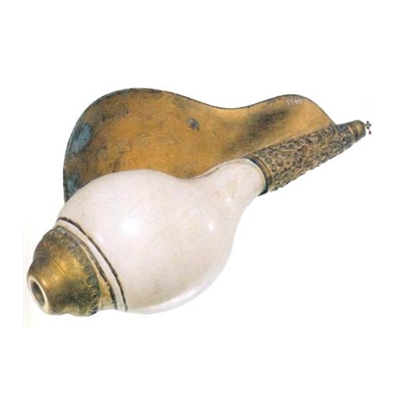Hailuo overview

Conch (pinyin: Hailuo) is a wind instrument of Tibetan, Mongolian, Naxi, Dai, Manchu, and Han nationalities. Also known as Li, Fanbei, conch number, law snail and so on. Popular in Tibet, Inner Mongolia, Qinghai, Yunnan, Sichuan, Gansu and other provinces and regions.
Conch, one of the Buddhist instruments since ancient times, originated from India and Southeast Asian countries, and was introduced to my country with Buddhism. In addition to being used as instruments in Buddhist monasteries, conch shells were also used in the military, labor and entertainment life of ancient northern ethnic minorities. According to the records of ancient Tibetan literature, before the appearance of the tongqin, in Tibetan Buddhist monasteries, the Faluo was the main wind instrument. Later, the tongqin took the place of the Faluo. In modern times, in Buddhist monasteries, conch shells are only used for performances and Qiangmu performances between chanting sutras.
Modern conch shells are made of large conch shells that grow naturally in seawater, and the shells are spiral. Sizes vary, generally 25 cm to 33 cm in length. It is better to choose a conch with a clean color or with flower stripes, grind the tip of the conch to make a mouthpiece, and make the mouthpiece into a conical or straight cylinder shape, with an outer diameter of 2 cm to 3 cm, and a small central blow hole with a hole diameter of only 1 cm. cm, and some drill holes at both ends of the snail and wear thin leather ropes, which can be hung obliquely on the chest or under the armpits when not playing. Conch decoration is more exquisite, usually inlaid with copper or silver pieces, which is very solemn and beautiful. Not only made of metal mouthpieces, but also inlaid with copper or silver sheets from the middle of the screw body to the screw mouth to make wing-shaped decorations, and the tail of the wings is also decorated with rings, which are decorated with silk ears or colorful silk.
- type:wind instrument
- popular area:Tibet, Inner Mongolia, Qinghai, Yunnan, Sichuan, Gansu and other provinces
reference materials and contributors
- 海螺 · 搜狗百科
- 海螺-中国民族乐器介绍 · 中小学音乐教育网
overview of other similar instruments
- sanyanxiao overview
- Daguangxian overview
- Leiqin overview
- hahao overview
- yandundagu overview
- Han Xiaozheng overview
- Fang Xiang overview
- guanzi overview
- zhuqin (Dao Qin) overview
- zhuiqin overview
- bangzi overview
- three-stringed piano overview
- Gehu overview
- xiao overview
- xiaokonghou overview
- Konghou overview
- Sheng overview
- suona overview
- hulusi overview
- gushao overview
 渝公网安备 50010702504639号
渝公网安备 50010702504639号